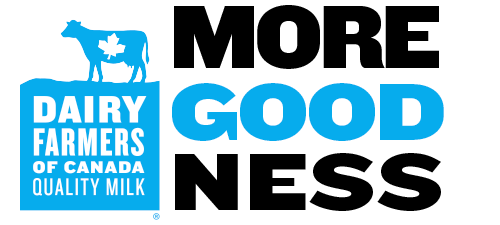
Managing Water Use on the Farm
Find out how Canadian dairy farmers are using cutting-edge technology and time-tested techniques to continually reduce fresh water use and preserve its quality on dairy farms.
In Canada, we are privileged to have an abundance of fresh water and, like all Canadians, dairy farmers have a concerted interest in preserving our natural resources. Year after year, we invest in cutting-edge research to identify new approaches, and we continuously adopt new farming practices to preserve those resources for future generations.
Reducing, reusing, and recycling
Farmers are motivated to reduce water use in the barn as it saves costs on water needed for heating and cooling, and costs related to treating, storing, moving and diverting water.
Ways that farmers are reducing their water use:
- Keeping cows cool and comfortable: Cows typically have unlimited access to drinking water, but when they are cooler and more comfortable, they drink less! Improved cow comfort also increases milk production.
- Preventing and repairing leaks in their water, wastewater and irrigation systems.
- Reusing water in their cooling and cleaning systems.
How does water get used on dairy farms?
It's not just the cows that need water! The biggest need for water in dairy production is for the crops that cows eat. Most of that need is met by rainfall – but rainfall can vary greatly by region, and some farms that get less rain rely more on irrigation. In years of drought, farmers are likely to turn to / increase irrigation to continue to grow forages and crops to ensure their cows can continue to eat. In 2021, growing crops needed 83% of the water consumed on dairy farms, as more irrigation was needed as it was a year of drought. At the same time, farms in other areas of the country may have a surplus of water, and have to implement tile drainage and other drainage systems to keep their soil optimal.
How much water does it take to produce milk in Canada?
In Canada, producing one litre of milk required, in 2021, about 31 litres of water – but as mentioned above, this number varies from region to region, and the biggest factor is the amount of irrigation needed in fields that year.
How much water do dairy cows drink?
The average 1500-lbs dairy cow drinks about 100–150 litres of water a day. In addition to drinking water, water is also used throughout the milking barn:
- Cleaning: In order to maintain the high standards of quality Canadian milk, the milking equipment gets cleaned regularly and thoroughly, along with barn areas where cows stand.
- Water also circulates in heat exchange systems to cool the milk after milking. Typically, this water is cycling through the heat exchange systems, before being used as warm drinking water for animals.

Maintaining water quality
Canadian dairy farmers produce milk that is safe and nutritious, while caring for the land and water. Not only does this impact the water that they and their animals drink, but also the environment that is shared with the community and society as a whole.
Canadian dairy farmers are also working to maintain quality and purity of waterways near their fields, and to prevent runoff, contamination and pollution. Some of the most effective modern techniques include:
- Protecting and constructing wetlands: Wetlands are Mother Nature’s filters, with their vegetation and bacteria naturally working to remove solids, nutrients and pollutants from incoming water, preventing contamination downstream. Many farms have naturally occurring wetlands that they work to protect, and some farmers have the ability to create them where they don't occur naturally.
- Optimizing crops: Dairy farmers are increasingly using legumes, like Alfalfa, in their crop rotations. Legumes are nitrogen-fixing plants, which reduce the need for nitrogen-based fertilizers and reduce nitrogen leaching – which improves water quality. Legumes offer good nutrition to ruminants like cows, so it's a win-win-win for cows, farmers and the environment!
Improvements in farming practices and research will continue to further reduce our environmental impact and a better management of our natural resources.
Sources
Groupe AGÉCO. 2024. Environmental Life Cycle Assessment of Canadian Milk. (Report prepared for Dairy Farmers of Canada)
Ducks Unlimited Canada, about wetlands in Canada: https://www.ducks.ca/
Ontario Soil and Crop Improvement Association, about wetlands in Canada: https://www.youtube.com/watch?v=KS3dNgwDBPE
Agriculture Canada, on crop practices that improve water and soil: https://www.agr.gc.ca/eng/agriculture-and-climate/agricultural-practices/soil-and-land/
Animation showing how a heat exchange system is used to cool milk: https://www.youtube.com/watch?v=b1dzl5iokYQ
Ontario Soil and Crop Improvement Association, video explaining tile draining: https://www.youtube.com/watch?v=sGeiOBwRHi8




